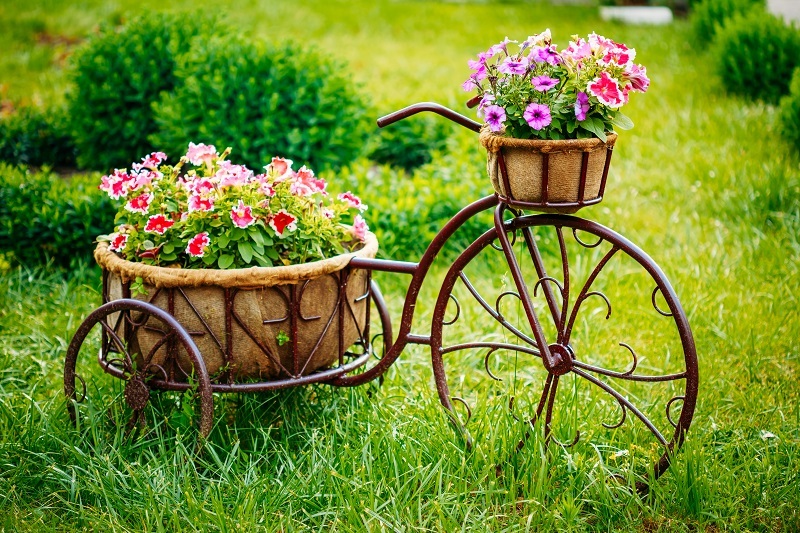7 Surprising Tulip Facts That Will Change How You See Them
Posted on 03/07/2025
7 Surprising Tulip Facts That Will Change How You See Them
Tulips are among the most adored and widely recognized flowers in the world. Their vivid colors, elegant shapes, and storied history have made them a symbol of hope, renewal, and even fortune. However, beyond their beauty lies a world of fascinating details and unexpected stories. In this comprehensive guide, we're uncovering 7 surprising facts about tulips that will forever change the way you see these iconic blooms. Whether you're a gardening enthusiast, flower lover, or simply curious about the secrets behind tulips, these revelations offer new perspectives you never considered.

1. Tulips Didn't Originate in the Netherlands
When you hear the word "tulip," vibrant fields in the Netherlands instantly come to mind. The Dutch tulip industry is world-famous, but did you know that tulips originally came from a completely different region?
The Real Origin Story of Tulips
- Central Asia Roots: Tulips are native to the mountain valleys of Central Asia, especially the region that is now modern-day Kazakhstan, Uzbekistan, and neighboring countries.
- Cultural Importance: These exquisite flowers grew wild on the slopes and were cherished by the nomadic Turkish people for centuries before spreading to other parts of the world.
Their name, "tulip," is believed to derive from the Persian word "delband", meaning turban--referencing the flower's turban-like shape. It wasn't until the 16th century that tulips made their journey westward, eventually delighting the Dutch and embedding themselves into their culture.
2. Tulip Mania: The First Economic Bubble
Tulips aren't just pretty--they caused one of the most extraordinary economic events in history. During the Dutch Golden Age in the 1600s, tulips became so desirable that their price hit astronomical heights.
The Craze of Tulip Mania
- Highest Valued Flowers: Rare and unusual tulip bulbs--especially those with unique streaks and colors--became status symbols for the wealthy.
- Economic Frenzy: At its peak, some tulip bulbs were valued higher than houses in Amsterdam and could cost as much as six times an annual salary.
This period, called Tulip Mania, is often cited as the first recorded speculative bubble. By 1637, the bubble burst, leaving many people in financial ruin. Today, tulip mania serves as a cautionary tale for modern markets--and a testament to the enduring allure of tulips.
3. Tulips Have a Rich Symbolism
Beyond their commercial value, tulips have been woven into the fabric of cultures around the globe. They symbolize much more than just springtime beauty.
Tulip Flower Meanings and Symbolism
- Love & Passion: Red tulips stand for perfect love, making them popular in bouquets and romantic gestures.
- Forgiveness: White tulips signify forgiveness and respect, often given to express apologies or convey peace.
- Royalty & Wealth: Purple and black tulips are associated with luxury and nobility.
- Cheerfulness: Yellow tulips represent happiness, hope, and uplifting thoughts.
In Turkey and Iran, the tulip is seen as a symbol of paradise on earth and a motif in poetry, art, and even textiles. Meanwhile, for the Dutch, tulips remain a symbol of national identity and economic prosperity.
4. You Can Eat Tulips! (But with Caution)
It might be astonishing to learn that tulip petals are edible--used historically as a survival food and even in haute cuisine. However, it's important to proceed carefully for safety reasons.
The Culinary World of Tulips
- World War II Famine: During the Dutch famine of 1944-45, known as the "Hunger Winter," tulip bulbs became a crucial food source. People boiled and ate the bulbs to survive, though the taste was far from pleasant.
- Gourmet Dishes: Today, chefs sometimes use tulip petals as colorful garnishes in salads and desserts because they are non-toxic and beautifully aromatic (but only the petals of untreated, pesticide-free tulips).
Important Note: Tulip bulbs contain toxins that can cause stomach upset or more severe reactions, so eating the bulbs themselves is not recommended unless in extreme circumstances. Always ensure that any tulip parts used in meals are safe, organic, and intended for consumption.
5. Tulips Come in Almost Every Color--Except True Blue
The dazzling tulip spectrum spans a breathtaking palette. From vibrant reds to deep violets, and from sunny yellow to purest white, there's a tulip color for almost every mood and setting. Yet, there's one shade you'll never naturally see: true blue.
The Science of Tulip Colors
- Natural Variety: More than 3,000 registered varieties exist, including streaked, fringed, and multi-toned tulips.
- No Natural Blue: Despite extensive breeding, tulip genetics lack the pigment "delphinidin," which is necessary for producing blue flowers.
- Closest Alternatives: Some varieties come close, with purple or violet hues that seem almost blue under certain lighting--but never quite true blue.
This absence of blue tulips keeps horticulturalists striving for that elusive pigment. If a true blue tulip were to be developed, it would surely become another hot commodity amongst collectors and gardeners alike.
6. Tulips Can Be Grown Indoors and Bloom in Winter
Most view tulips as classic outdoor spring flowers, yet you can enjoy their lively beauty even in the middle of winter--right on your windowsill!
Forcing Tulip Bulbs for Indoor Blossoms
- Chill First: Tulip bulbs require a period of cold to mimic winter conditions. Place bulbs in the refrigerator for 12-14 weeks before planting.
- Plant Indoors: Transfer chilled bulbs into pots with well-draining soil, water them, and keep them in a cool spot to allow roots to grow.
- Watch Them Bloom: As soon as shoots appear, move the pots to a sunny location indoors. Within weeks, you'll have vibrant tulips blooming early, well before outdoor ones awake!
Forcing tulips indoors is a delightful way to enjoy bursts of color in winter and a hands-on experiment for gardeners of any skill level.
7. Tulip Festivals Light Up the World
Tulip festivals aren't just a Dutch tradition--they have become spectacular global celebrations attracting millions of visitors each year. These lively events showcase the diversity, resilience, and universal appeal of tulips in breathtaking displays.
Famous Tulip Festivals Worldwide
- Keukenhof Gardens (Netherlands): Known as "The Garden of Europe," Keukenhof boasts more than seven million blooming tulips every spring--a truly unforgettable sight.
- Canadian Tulip Festival (Ottawa): A living symbol of friendship between Canada and the Netherlands, this annual festival features over one million vibrant tulip blooms and celebrates the shared wartime history between the countries.
- Skagit Valley Tulip Festival (USA): Located in Washington state, this event covers endless fields with rich colors, drawing photographers and flower lovers from around the globe.
- Istanbul Tulip Festival (Turkey): Honoring the tulip's Asian origins, Istanbul's parks are filled with intricate designs and millions of tulips each April.
These festivals not only present stunning floral artistry but also unite communities in their shared love for tulips--offering inspiration, joy, and unforgettable experiences to visitors of all ages.

Bonus Fact: Tulips Fuel Modern Science & Conservation
Today, tulips serve a vital role beyond their ornamental beauty. Tulip research is driving advances in plant breeding, pest resistance, and environmental conservation. Scientists use tulip genomes to study disease resistance and climate adaptability, potentially shaping the future of sustainable agriculture.
At the same time, efforts to conserve wild tulip species in their Asian homelands are gaining ground, ensuring future generations can marvel at their ancestral splendor.
Conclusion: Tulips Are More Than Meets the Eye
Tulips have enchanted the world for centuries, but their allure extends far beyond their surface beauty. From wild Asian origins to starring in history's first economic bubble; from providing sustenance in times of famine to dazzling us at international festivals--tulips are full of surprises. With every fact unveiled, these flowers transform from simple spring favorites into extraordinary symbols of resilience, human ingenuity, and cultural connection.
Next time you see a tulip, remember: you're not just looking at a flower, but a living piece of global history, science, and art. Let these fascinating tulip facts inspire you to see tulips, and perhaps all flowers, in a whole new way.
Explore More About Tulips
- Caring for Tulips: Discover tips for growing and preserving tulips at home.
- History of Tulip Cultivation: Dive into the evolution of tulip farming across cultures.
- Rare & Unique Tulip Varieties: Learn about the most collectible tulips around the world.
Share this article with fellow flower enthusiasts and let the world rediscover the wonder of tulips!





